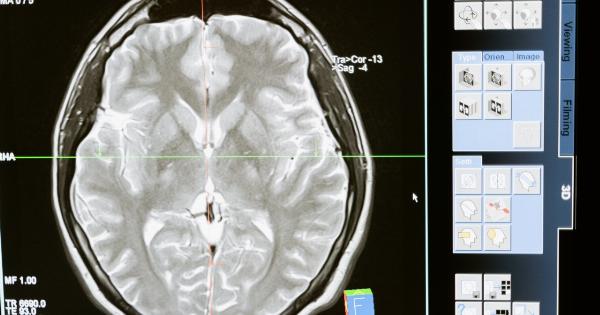Non-alcoholic fatty liver disease (NAFLD) is a condition that affects millions of people around the world. NAFLD is characterized by excessive fat accumulation in the liver which can lead to inflammation, scarring, and damage to liver cells.
This condition can potentially progress to liver failure, liver cancer, and even death. It is important to note that NAFLD can affect people of any race, gender, and age group. However, certain risk factors such as genetics, diet, and lifestyle can increase an individual’s likelihood of developing the condition.
The Role of Genetics in NAFLD
The genetic factors that predispose an individual to NAFLD are complex and not fully understood yet. However, several studies have shown that having a family history of the disease can increase an individual’s risk of developing NAFLD.
In fact, having a first-degree relative (parent, sibling, or child) with NAFLD increases an individual’s risk of developing the condition by up to four times.
Researchers believe that the genetic factors responsible for NAFLD involve the regulation of lipid metabolism, insulin resistance, inflammation, and oxidative stress.
For instance, some genetic variations may interfere with the body’s ability to break down and eliminate fats from the liver, leading to their accumulation and inflammation. Other genetic factors may affect the way the liver responds to insulin, a hormone that regulates blood sugar levels. Insulin resistance can promote the development of fatty liver and other metabolic disorders such as diabetes and obesity.
The Impact of Diet and Lifestyle on NAFLD
In addition to genetics, several modifiable factors can contribute to the development and progression of NAFLD. One of the most significant factors is diet.
A diet high in calories, saturated and trans fats, added sugars, and refined carbohydrates can promote the accumulation of fat in the liver and worsen insulin resistance. Conversely, a diet rich in fiber, fruits, vegetables, lean protein, and healthy fats can help prevent and manage NAFLD.
Lifestyle factors such as physical inactivity, smoking, and excessive alcohol consumption can also increase the risk of NAFLD.
Lack of exercise can lead to weight gain, insulin resistance, and systemic inflammation, which can all contribute to liver damage. Smoking and excessive alcohol consumption can also damage the liver and increase the risk of fatty liver disease.
It is important to note that NAFLD is not caused by alcohol consumption, but excessive drinking can make the condition worse or prevent it from improving.
The Symptoms and Diagnosis of NAFLD
One of the challenges of NAFLD is that it often does not cause any noticeable symptoms in its early stages.
Some people may experience fatigue, abdominal discomfort, or mild jaundice, but these symptoms are not specific to NAFLD and can indicate other conditions as well. As the disease progresses, some individuals may develop more severe symptoms such as swelling of the abdomen and legs, confusion, or bleeding from the veins in the esophagus or stomach.
NAFLD is typically diagnosed through blood tests, imaging tests, and liver biopsy. Blood tests can detect elevated liver enzymes, which indicate liver damage.
Imaging tests such as ultrasound, CT scan, or MRI can reveal the presence of fat in the liver and assess its severity. Liver biopsy involves the removal of a small sample of liver tissue for examination under a microscope and can provide a definitive diagnosis of NAFLD and its stage.
The Treatment and Prevention of NAFLD
There is currently no specific cure for NAFLD, but the condition can be managed and even reversed in some cases. The primary goals of treatment are to reduce liver inflammation, prevent further liver damage, and promote liver health.
This can be achieved through lifestyle changes, medications, and other interventions such as weight loss surgery (in severe cases).
Lifestyle changes such as adopting a healthy diet and exercise routine can improve insulin resistance, reduce inflammation, and promote weight loss.
Medications such as pioglitazone, vitamin E, and metformin can also help improve insulin resistance, reduce liver inflammation and fibrosis, and promote liver health. However, these medications should only be used under the supervision of a healthcare provider and may have potential side effects.
Preventing NAFLD involves minimizing the risk factors that can contribute to its development. Some tips to prevent NAFLD include:.
- Adopting a healthy diet rich in fiber, fruits, vegetables, lean protein, and healthy fats
- Avoiding or limiting the consumption of sugary and fatty foods and drinks
- Exercising regularly for at least 30 minutes a day, five days a week
- Avoiding or quitting smoking
- Limiting alcohol consumption to no more than one drink per day for women and two drinks per day for men
- Maintaining a healthy weight and avoiding obesity
Conclusion
Non-alcoholic fatty liver disease is a serious condition that can lead to liver damage, liver failure, and other complications.
Although genetics plays a role in NAFLD, lifestyle factors such as diet, exercise, and alcohol consumption are also significant contributors. Having a family history of NAFLD can increase an individual’s risk of developing the condition, but this risk can be mitigated through healthy lifestyle choices and early detection.
If you have a family history of NAFLD or any symptoms of liver disease, schedule an appointment with a healthcare provider to get evaluated and receive appropriate treatment.



























